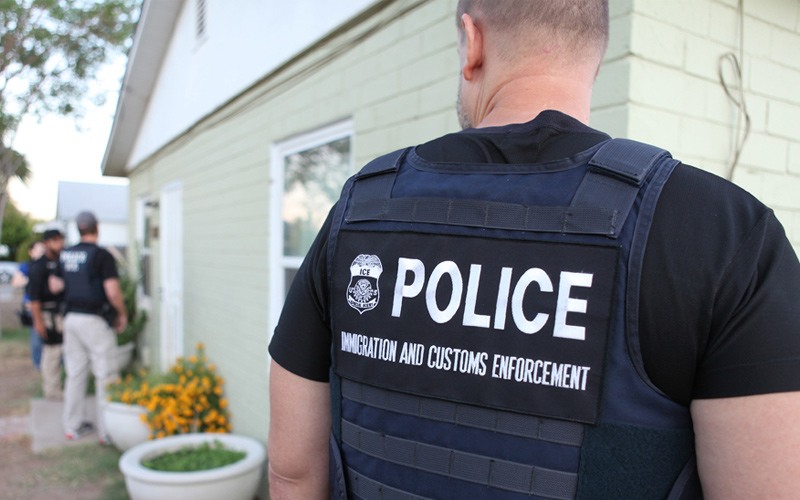As we near the one-month mark of the new Trump administration, it is clear that the president’s thinly veiled threats of imposing mass deportation on “criminal immigrants” are in fact a promise to target all immigrants—and sometimes even U.S. citizens.
In the first weeks, we have already seen wrongful immigration arrests of people with U.S. passports, including a veteran in New Jersey, Native Americans in the Navajo nation, and others from Puerto Rico. We have reports of the sweeping-in of immigrants with lawful status who pose absolutely no public safety threat, including Venezuelan people with no criminal record, shipped off to Guantanamo Bay. A Miami middle-school teacher with DACA faced arrest and possible deportation. Faith leaders have spoken out about U.S. Immigration and Customs Enforcement agents showing up at the doors of churches. These anecdotes and experiences from the first weeks of Trump’s second term underscore the indiscriminate nature of the administration’s immigration regime and its attempt at a sweeping enforcement dragnet.
The consequence of a mass deportation agenda that targets anyone and everyone is a chilling effect. The threat itself of aggressive immigration enforcement imposes fear on immigrant and minority communities. They become scared to leave the house, go to work, or attend school as these everyday activities could end in detention and deportation of themselves or their loved ones. School districts like one in Texas, are forced to send letters to their students and parents, warning them that ICE may show up on the morning school bus. And when ICE uses intimidation stunts like posting ominous photos of alleged “criminal immigrants,” publicizes its raids, or uses military planes to deport people, the fear mongering becomes theater but also hurts local communities and their economies.
Citrus farmers in California were afraid to show up to work, just like farmers in Florida, New York and Iowa. When ICE threatened enforcement in Chicago, some people hid in their attics. In states like Texas, where undocumented people represent approximately 50% of the construction industry’s labor force–this chilling effect will have reverberations for local housing costs and economies. This is unsurprising considering that the 11 million undocumented people who live in the U.S. fill critical sectors of the labor market–like agriculture, construction, and health care–in addition to loving U.S. citizen children and partners and having deep ties to our communities.
It doesn’t matter whether ICE hits its arrest “quotas” or “targets,” the damage is already at play. President Trump has set a goal of approximately 1,000 arrests per day for immigration enforcement agencies–a goal his administration was unable to meet this past week. But using immigration enforcement to score political points and adopting a terrorizing PR strategy means people still won’t show up for our country and economy–and that hurts all of us.
Indiscriminate arrests also wastes billions of taxpayer dollars and actually undermines our safety. At the American Immigration Council, we calculated in a recent report that the average cost per at-large immigration arrest–like the ones we are seeing now under Trump–would be $6,653. Our estimates show that just transporting a person from the site of an arrest to the nearest ICE office costs an additional $3,745.
To meet these costs, President Trump has redirected law enforcement resources away from critical priorities like combating drug trafficking, terrorism, and child sex crimes to instead focus on arresting and deporting people who pose no threat at all. For example, Trump ordered ICE’s Homeland Security Investigations (HSI), which typically investigates online child sex abuse material and fights transnational criminal organizations, to make it their “primary mission” instead to investigate immigration law offenses. We have seen this redirection of critical public safety resources before. During Trump’s Zero Tolerance policy in 2018—which led to family separations at the border—prosecutors had to drop other cases to focus on charging migrants with misdemeanors. As a result, prosecutions for drug trafficking at the border plummeted.
Now, as President Trump signals that he sees ICE’s arrests as too low in number and frequency, he is working with Congress to seek $175 to $200 billion additional dollars to fuel this mass deportation agenda. This request is six times more than the already historically-high funding levels of around $30 billion for ICE and CBP. We can be assured that if Congress approves these unprecedented dollars, indiscriminate arrests of U.S. citizens and people who pose no public safety threat will continue at the expense of safety and security.
FILED UNDER: Immigration and Customs Enforcement, Trump administration


